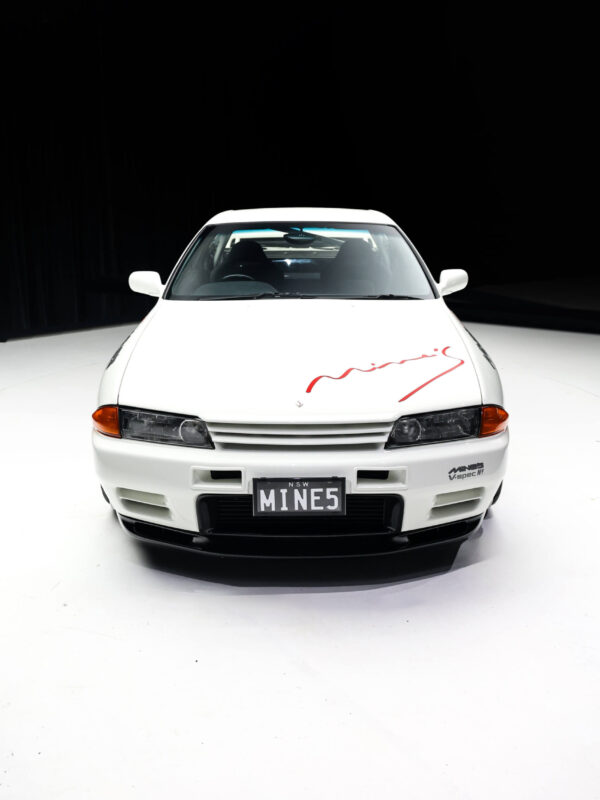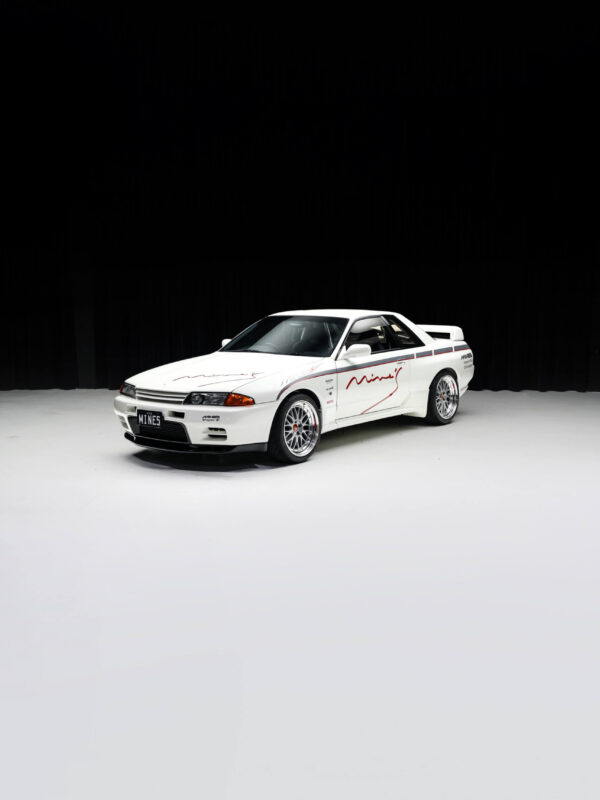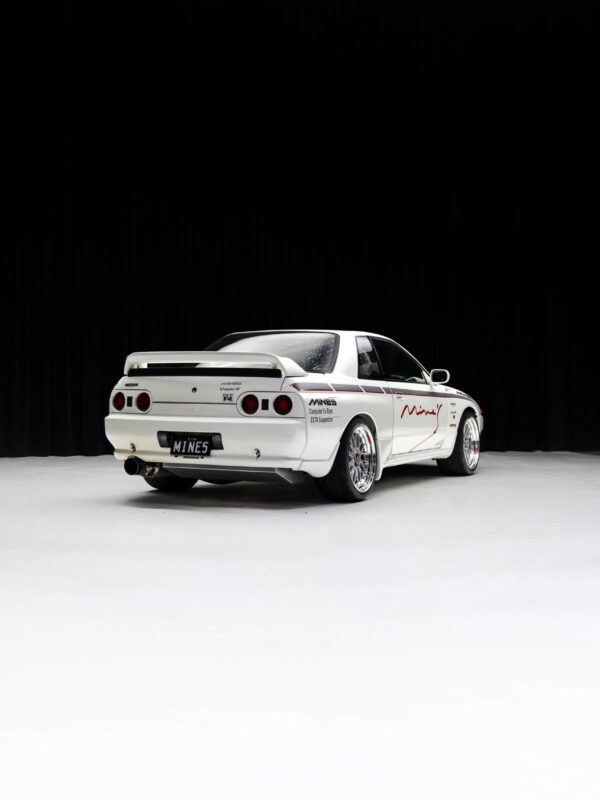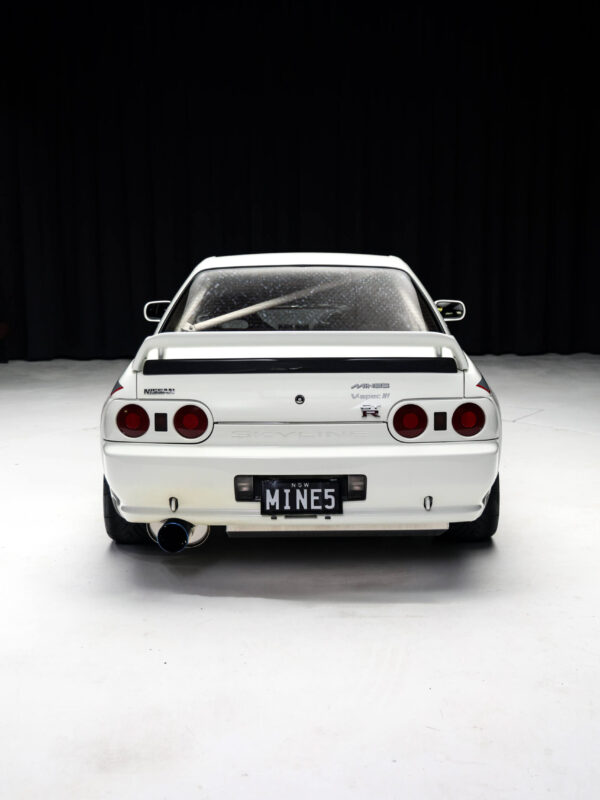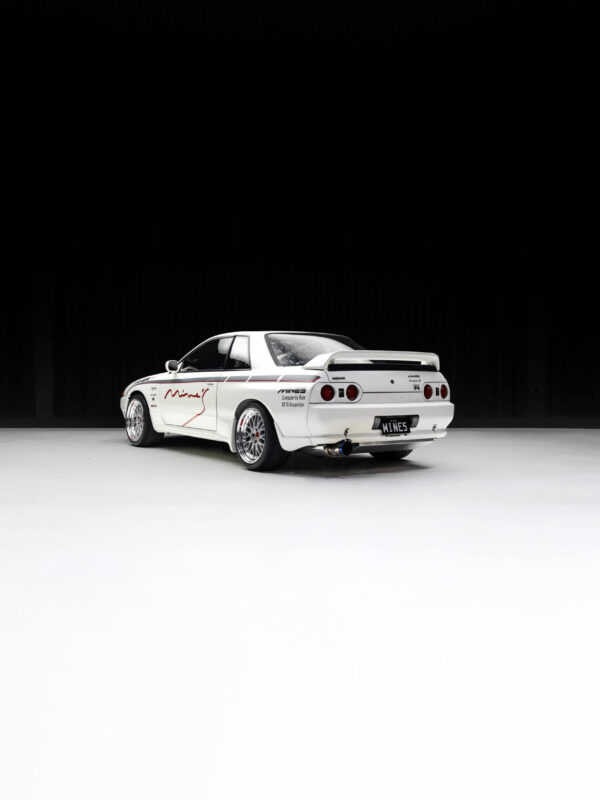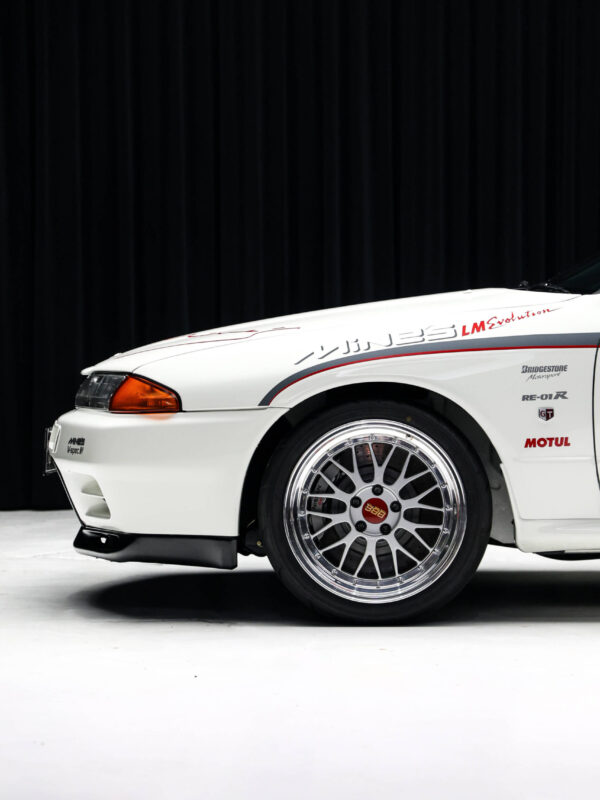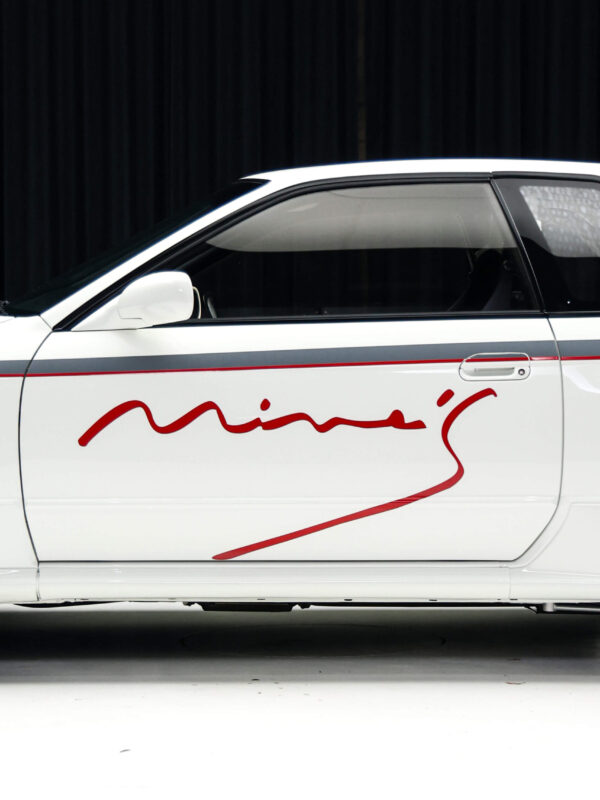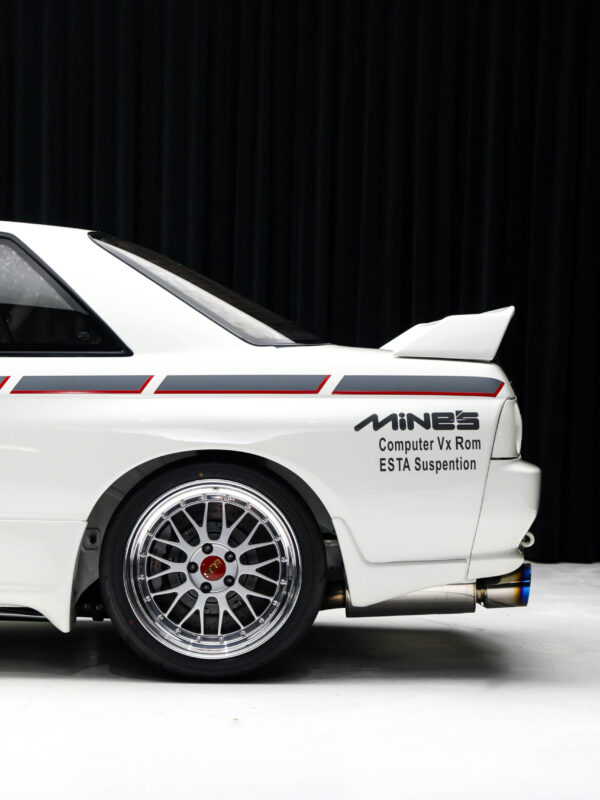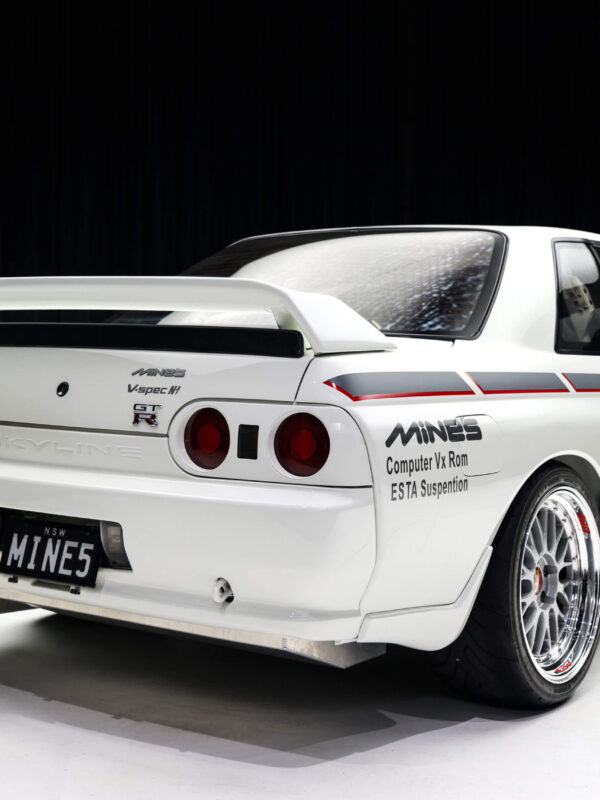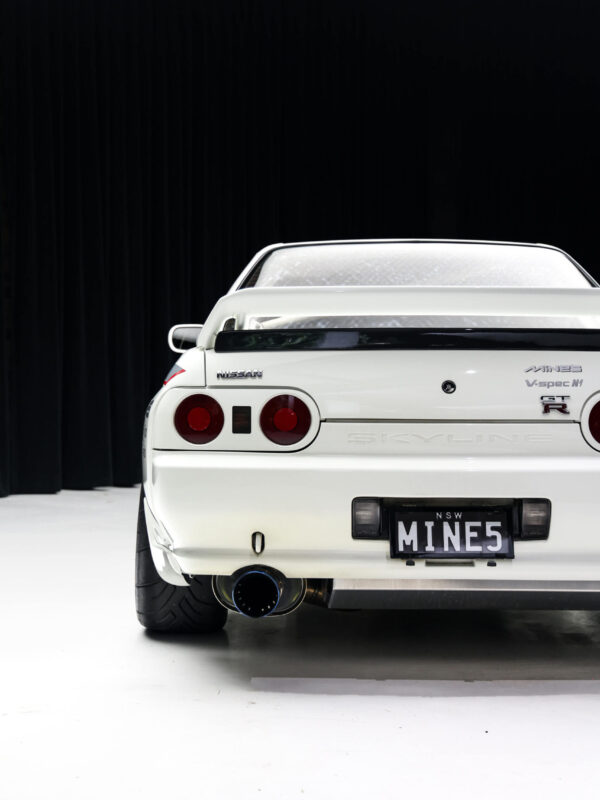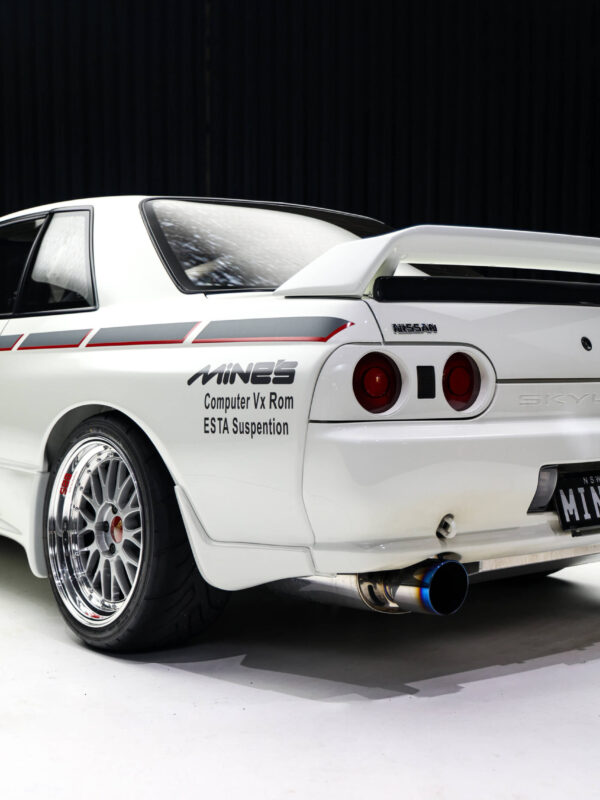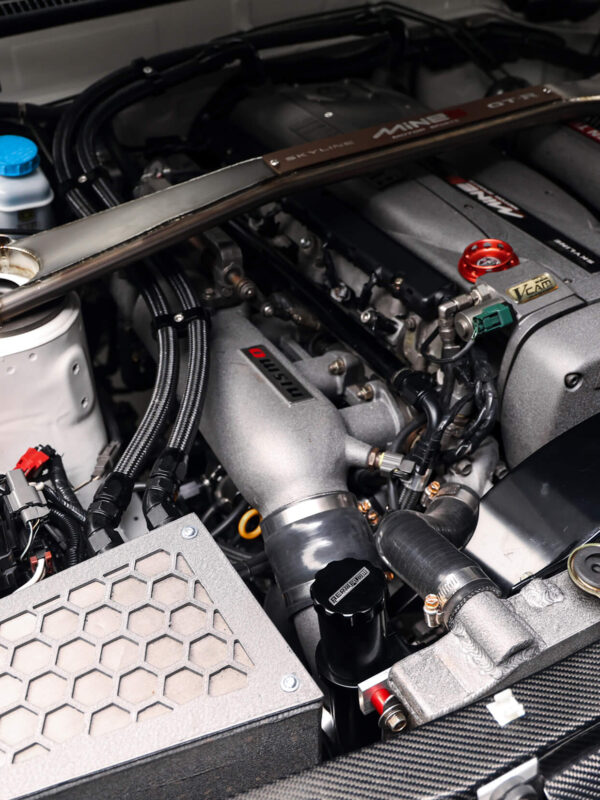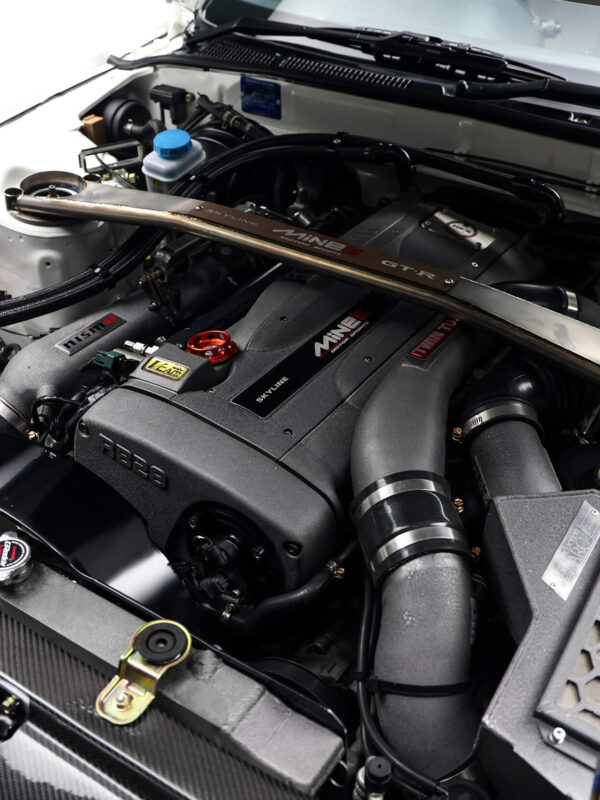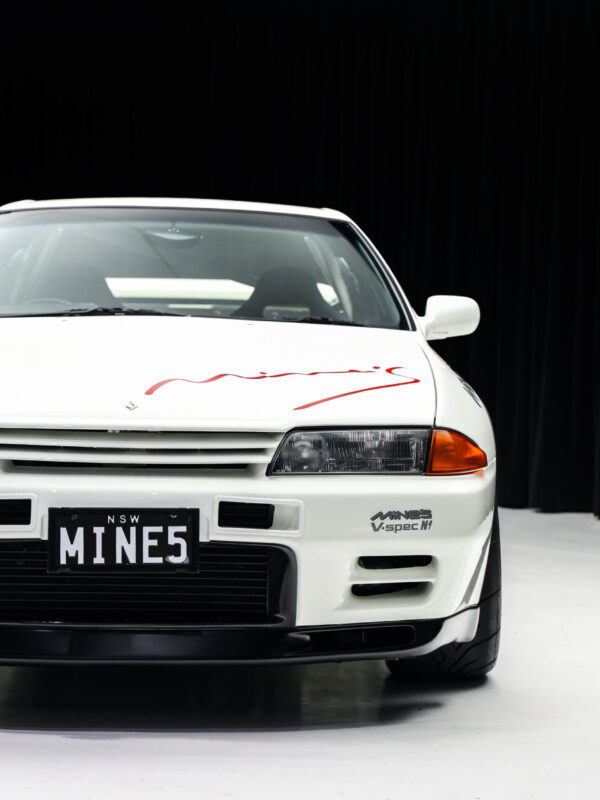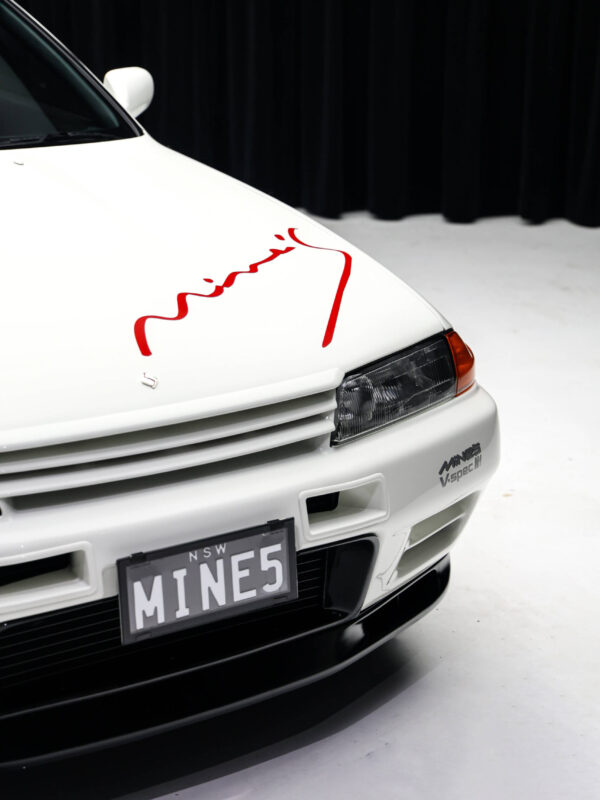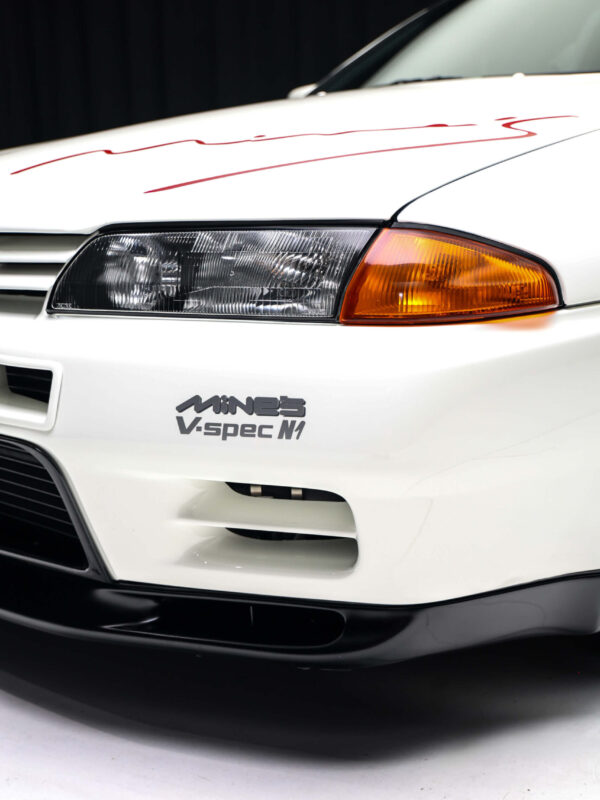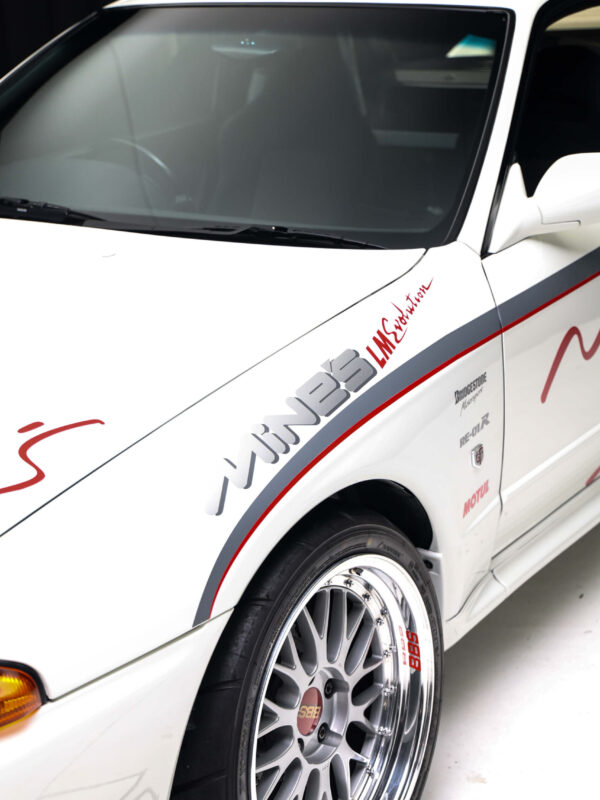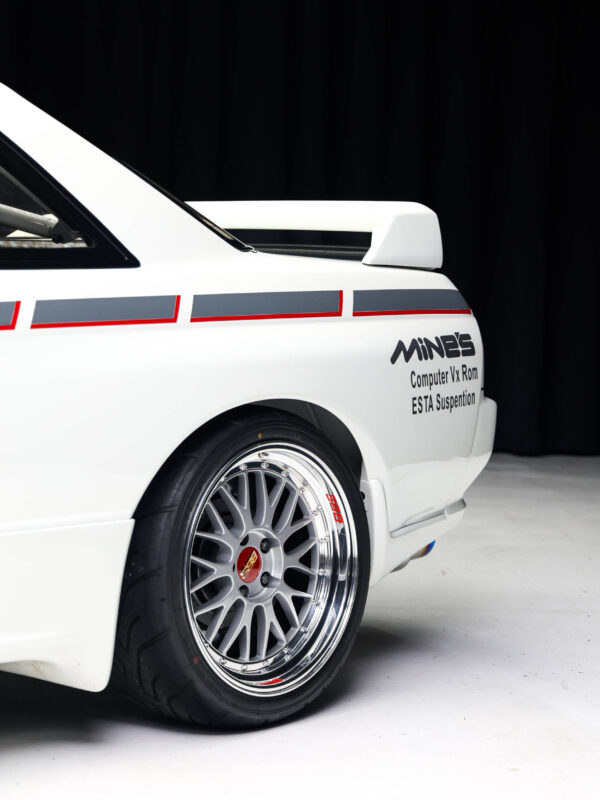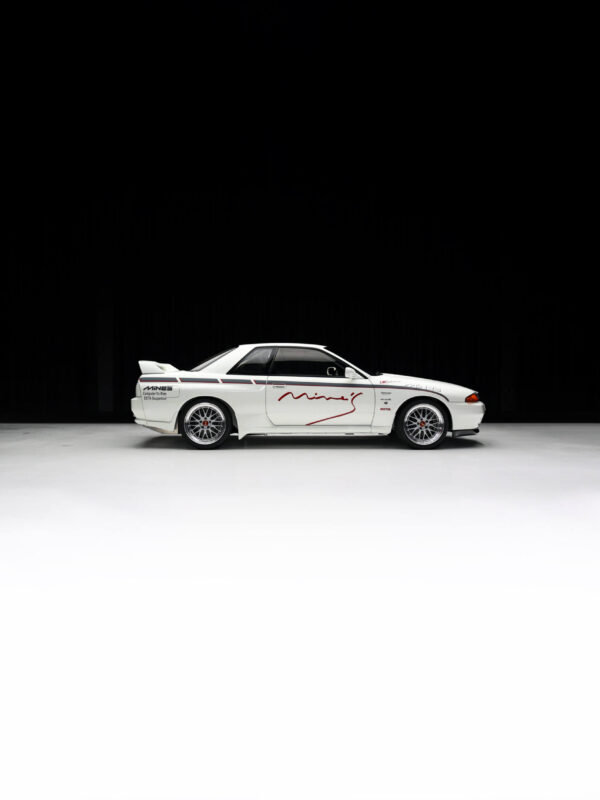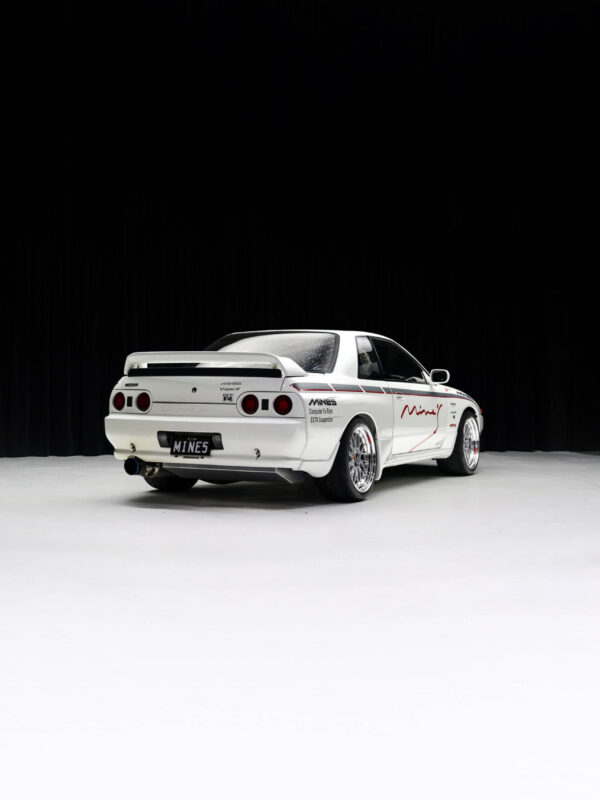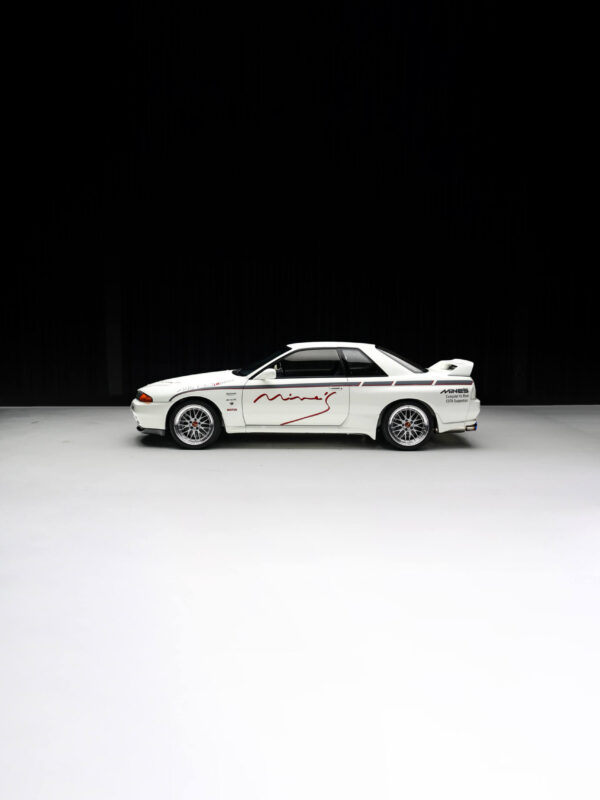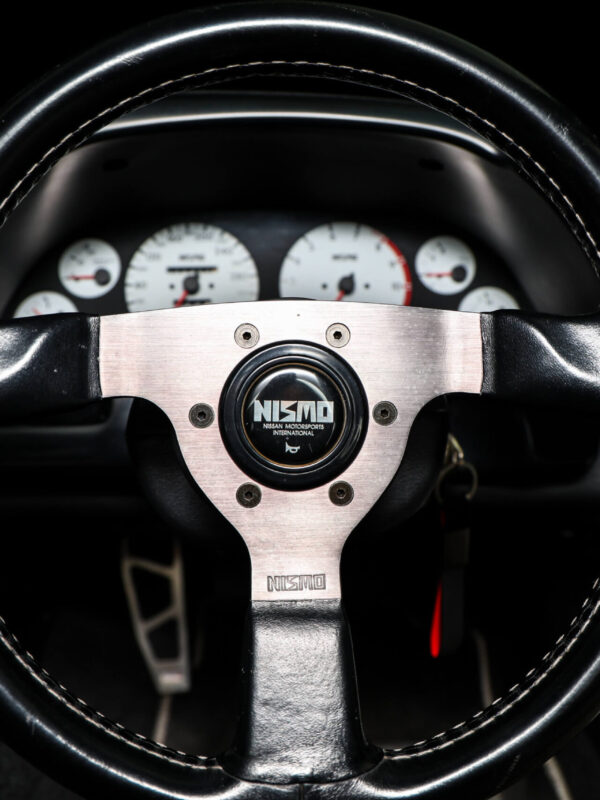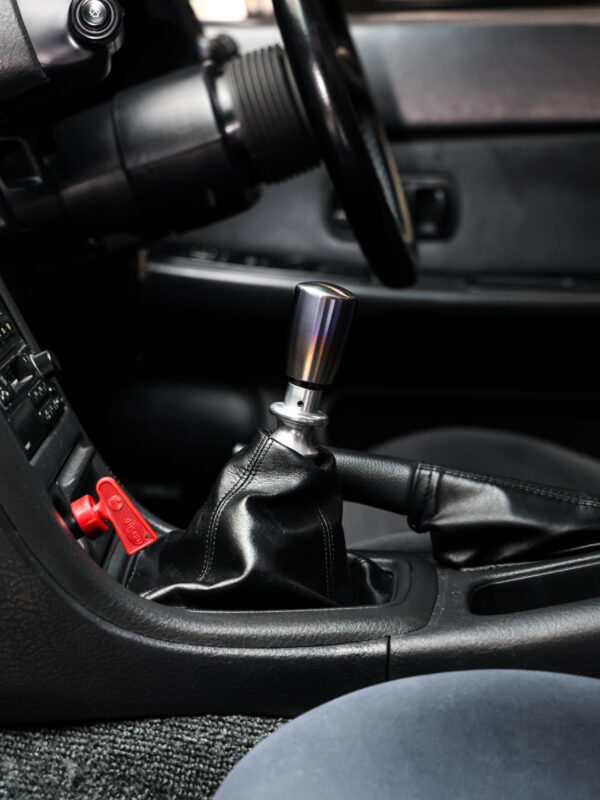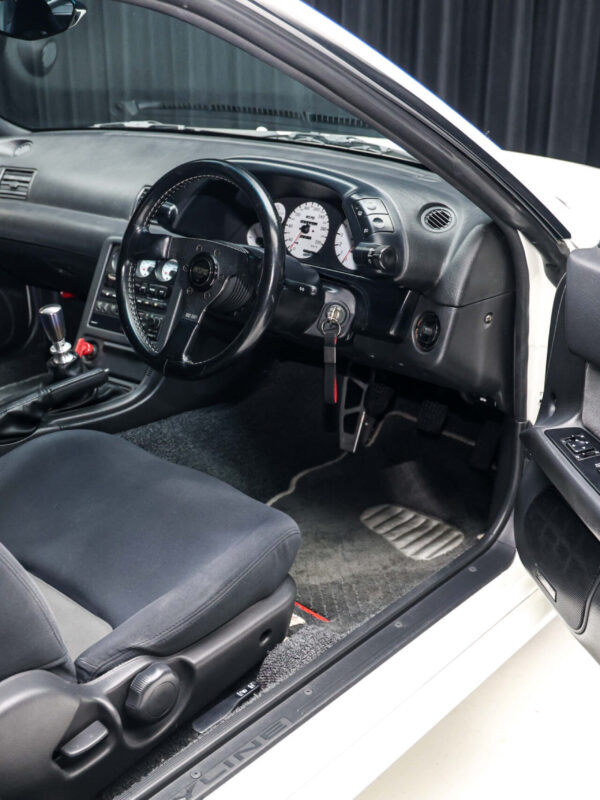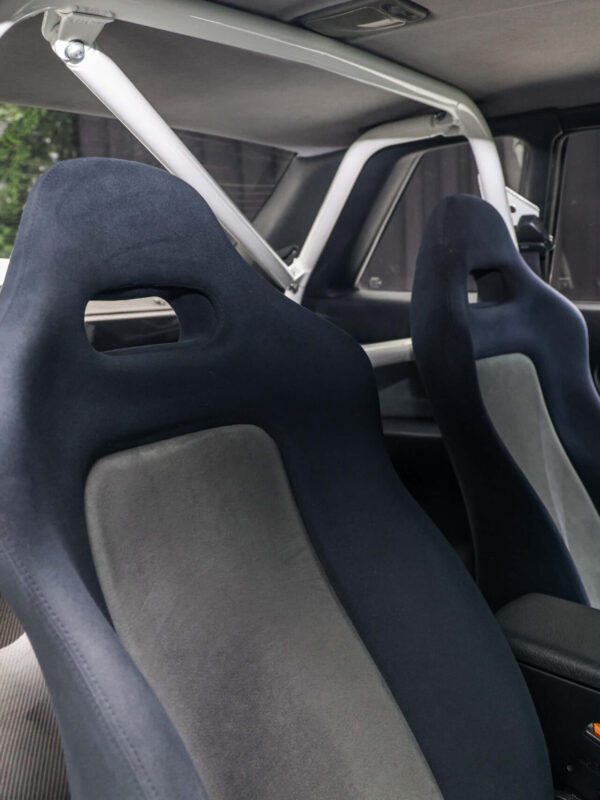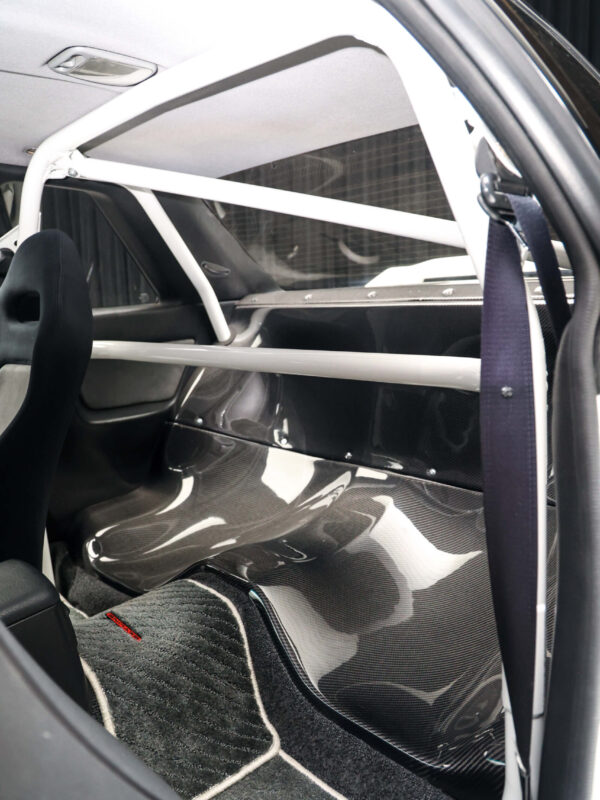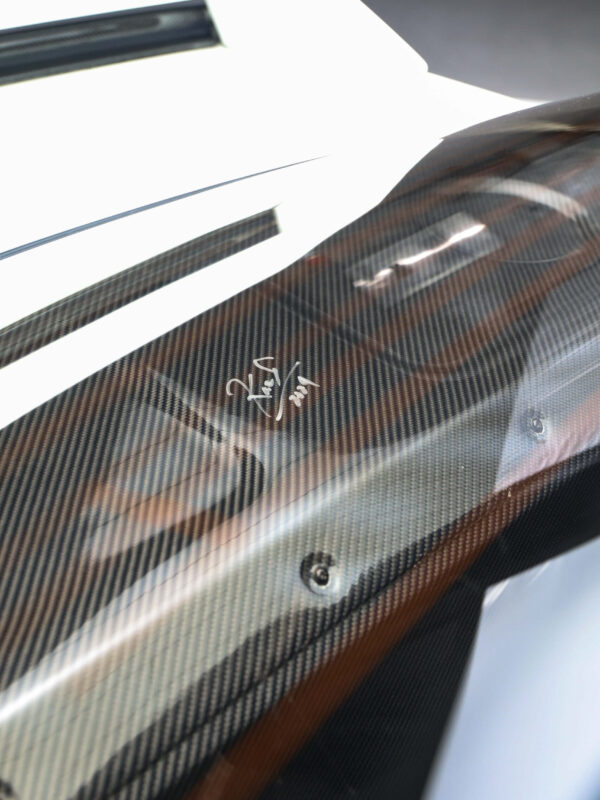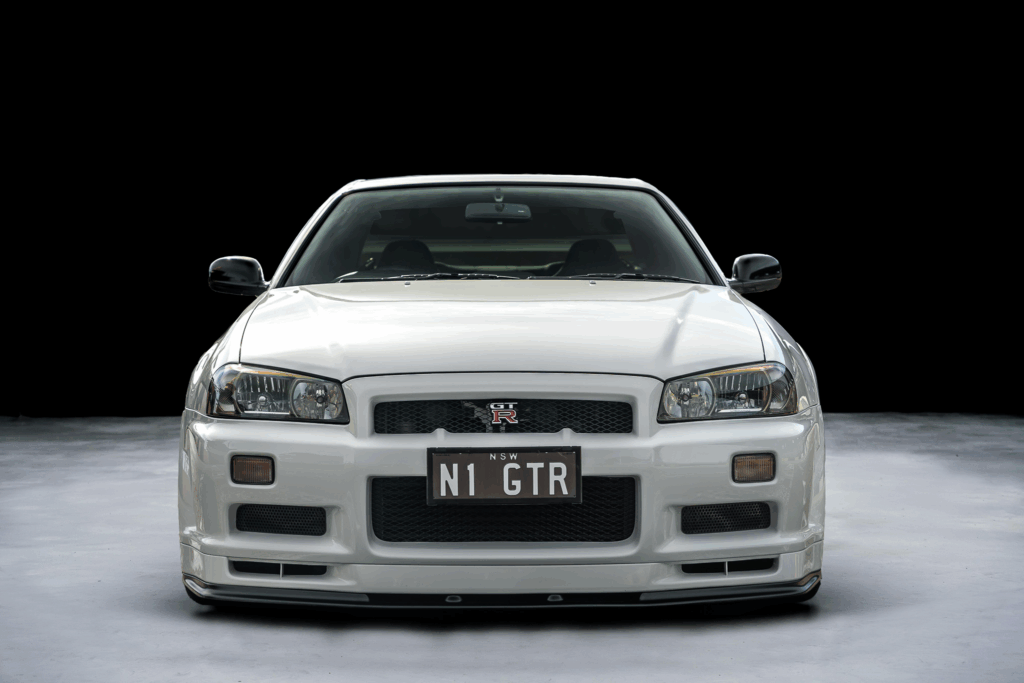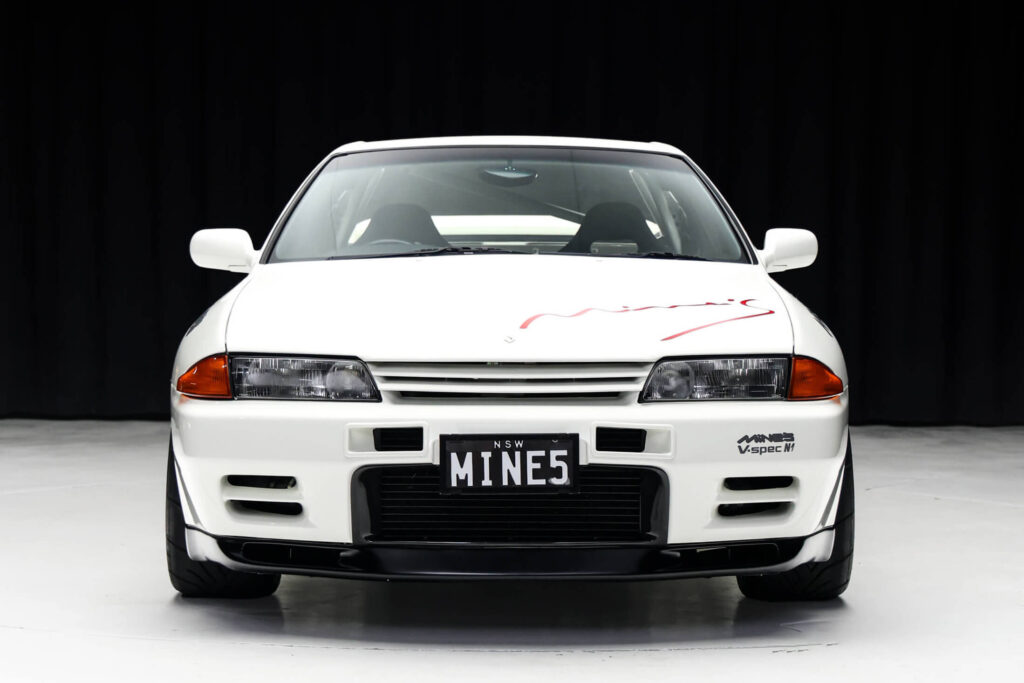Development Three:
R32 GT-R V-spec II N1
By the time Development Three began, Legendary Garage had already proven itself capable of meticulous precision (Development One) and bold reinterpretation (Development Two).
But with Development Three, the brand chose to dig deeper into the very roots of the GT-R renaissance—the R32, the car that reignited Nissan’s dominance and reshaped the skyline of 1990s Japanese motorsport. It was the machine that conquered Group A, earning the nickname “Godzilla” from the Australian media as it dismantled touring car fields at Bathurst and beyond. That era forged a legend—one defined by precision engineering, ruthless consistency, and a motorsport pedigree that bridged continents.


This time, the challenge wasn’t to restore or reimagine. It was to channel the raw spirit of that golden age—when Japan’s tuning culture was exploding, when GT-Rs ruled both the circuit and the street—and combine it with Australia’s decades of racing expertise and hands-on mechanical innovation. The mission was to create something truly visceral. Something that merged analog purity with contemporary capability. Something that spoke to the raw genius of Nissan’s motorsport program and the fearless ingenuity of Australian racing culture—then turned the volume all the way up
The foundation? A factory R32 GT-R V-spec II N1 chassis—one of only 63 ever produced, purpose-built for Group A homologation and stripped by Nissan to the bare essentials. In its time, the R32 N1 was a scalpel: lightweight, rigid, and tuned for endurance. It was a car designed to dominate the track, not the showroom. Legendary Garage treated it as sacred ground, but this time, the goal was performance without restraint.
A Powerplant with Purpose: The Ultimate Test Mule.
Development Three was never about a single destination—it was about exploration. Unlike its predecessors, this project was deliberately unpolished, built to live in a constant state of flux. The R32 N1 was not preserved for display but transformed into a working laboratory, a rolling crucible where ideas could be tested, broken, and rebuilt without compromise.
The car’s purpose was to map the unknown. Every assembly, from intake systems to driveline ratios, was treated as a variable in a vast experiment. It was not a matter of chasing lap times or dyno numbers, but of creating a deeper understanding of how the GT-R platform behaved when pushed beyond its intended envelope. Each rebuild was a question posed, each track session an answer written in mechanical wear, performance data, and driver feedback.
That ethos of experimentation elevated the R32 N1 beyond the status of a project car. It became a vessel for discovery—an environment where failure wasn’t just accepted, but required. Through countless iterations, Legendary Garage built not only technical insight but a philosophy: that true progress demands the willingness to dismantle your own work, over and over again, until the right answers emerge.

A Legacy Written in Revisions
At the heart of Development Three lay the RB engine family, tested in forms few others have attempted. The car cycled through RB26, RB30, and hybrid block configurations, each trial exploring new combinations of bore and stroke, compression ratios, and camshaft designs. Induction setups were swapped repeatedly—twin turbo arrangements varied in size and configuration, each tested for response, durability, and ultimate headroom.
Every engine swap was less about chasing maximum numbers and more about cataloging behavior. How quickly would a configuration spool? Could it sustain torque deep into the rev range? Would it endure heat cycles, fuel demand, and punishing load without fatigue? These questions shaped the rhythm of the build: tear down, rebuild, measure, refine, repeat.
Just as critical were the supporting systems. Cooling circuits were redesigned and rotated, oiling setups optimized and re-optimized, fueling strategies stress-tested for reliability at the edge of flow capacity. Even ignition and charging were scrutinized, trialed, and replaced when necessary.
This holistic approach ensured that each iteration wasn’t just about an engine—it was about the ecosystem that allowed that engine to survive and thrive.


Power Delivered, Character Defined
If the engine defined raw power, the driveline shaped its personality. Development Three became a proving ground not only for gearboxes but for the subtle art of gearing itself. Both 5-speed and 6-speed transmissions were tested, exposing strengths and shortcomings under varying torque demands.
Final drive ratios at both ends were swapped systematically, experimenting with how mechanical leverage could shift the balance between off-the-line ferocity and sustained high-speed composure. These were not trivial changes. They altered the car’s very nature—its rhythm, its response, the way it spoke to the driver under load.
What emerged was a recognition that driveline choices are not mere mechanical adjustments. They are philosophical ones. In altering ratios and transmissions, the team wasn’t just shaping acceleration curves—they were shaping identity.
Development Three proved that character in a GT-R is forged as much through its gears and diffs as through the cylinders of its engine.
Where Limits End, Knowledge Begins
Perhaps the greatest gift of Development Three was its honesty. Not every build survived. Some broke catastrophically. But in each failure lay a map of limits—the points where ambition exceeded material, where theory collapsed under strain. Those failures were not setbacks. They were milestones.
This philosophy was not new. Australian motorsport has long been defined by a willingness to push machinery to the brink. From touring cars to endurance events, engines were tested not for how long they lasted, but for how far they could be driven before they failed. It was a crucible of trial and attrition, and the Nissan RB was only one of many platforms—alongside Ford, Holden, and others—that were driven until they exposed their weakest links. Legendary Garage carried that same ethos into Development Three: test relentlessly, break often, and learn more from collapse than from success.


By enduring that cycle, Legendary Garage gained something intangible yet invaluable: wisdom. The R32 N1 became the crucible in which the team learned what could be trusted, what must be reinforced, and what should never be repeated. That knowledge bled forward into every project that followed, from the poise of Development Two’s 400 N1 to the endurance-focused setups of later builds.
Development Three will never be remembered for polish or presentation. But it remains the most important teacher in the lineage. It proved that engineering greatness is born not from perfection, but from persistence. That every limit exists only to be redrawn.
Every fracture becomes a lesson, every limit a blueprint—proof that even failure drives the future forward.

